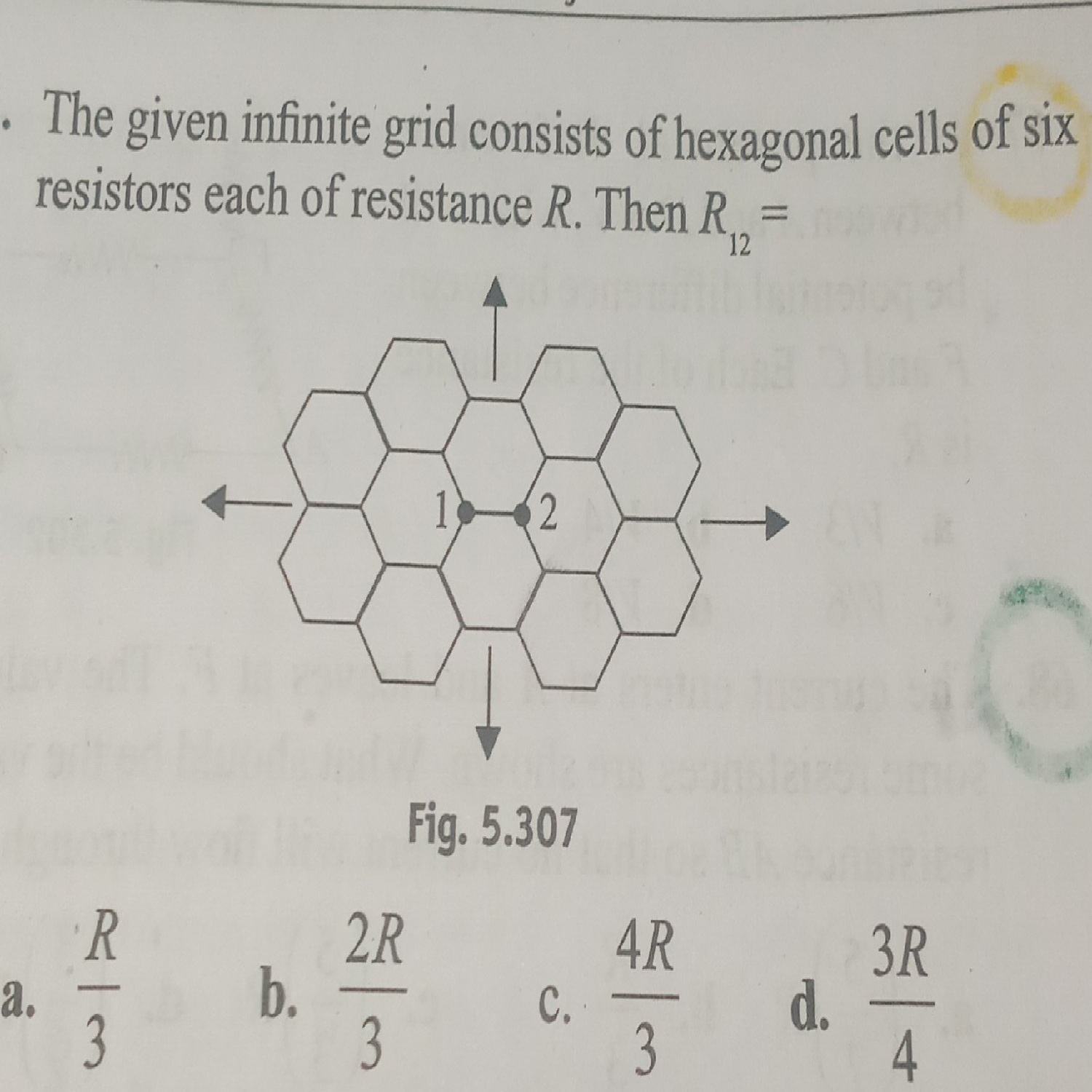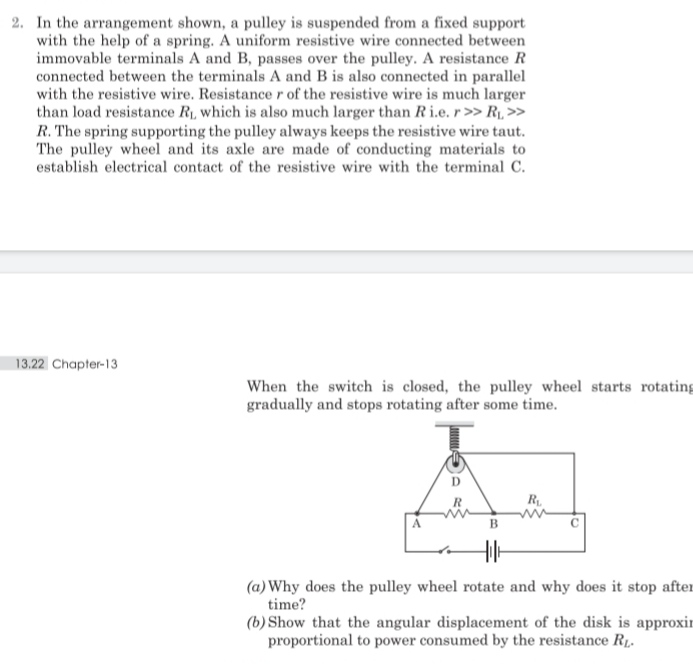20 - Current Electricity Questions Answers
Please explain krotov questions 3.26 of electricity
Sir, in the formula for current , in the ncert it first talks about steady state current. Then it writes i=q/t. but then it generalises and writes the formual i=(delta)q/(delta)t
sir my doubt is that how do we define flow of charge in steady state across a cross section. and why is there (delta)q in formula since the charge is not changing with time.
is it the amount of charge passing per unit time or the change in charge per unit time?
pls help
It is the amount of charge passing through a particular cross section of wire in unit time

Current comes out from the surface of one sphere symmetrically
and enters to the surface of other symmetrically.
Resistance of the medium around one sphere is

By superposition principle, it is solved in minimum time and effort, other method is very complex. So use superposition principle.
Divide current in point 1 and 2, considering symmetry throughout, we get the equivalent resistance of the whole network except resistor R between 1 and 2 is 2R
Now 2R and R in parallel between 1 and 2
Now solve
if an area of isoscale right angle triangle(made of uniform wire of unit resistivity) is 8 unit. a battery of emf 10 unit is connected with across the longest branch then the current drawn from battery is approx ans is 3A
area = l2/2 = 8 so l = 4
ρ = 1
so resistance of the 3 legs of the triangle = 4/A, 4/A, 4√2/A
battery is connected across the longest branch so eq. resistance = 4/A+4/A+4√2/A = 13.6/A
i think area of cross section will be given then calculate current

use kirchhoff laws
4-10i+1-30x = 0
1-30x+20(i-x) = 0
solve it for i and x
potential across A and B = 4-10i+1 = 30x

since the circuit is symmetrical with respect to the line given so V, the potentials at the given points will be same
now calculate the eq. for the half circuit and double it for getting the eq. of the whole circuit

since the circuit is symmetrical with respect to the line given so V, the potentials at the given points will be same
now calculate the eq. for the half circuit and double it for getting the eq. of the whole circuit
for one side eq. of 2 and 4 = 4/3
and then 4 in series of it so 4/3 + 4 = 16/3
finally 16/3||4/3
eq = 16/15
final answer = 16/15 * 2 = 32/15
Two voltameters one of copper and another of silver, are joined in parallel. When a
total charge q flows through the voltameters, equal amount of metals are deposited.
If the electrochemical equivalents of copper and silver are z1 and z2 respectively the
charge which flows through the silver voltameter is
m = z1q1 = z2q2 (1)
and q = q1 + q2
now solve





